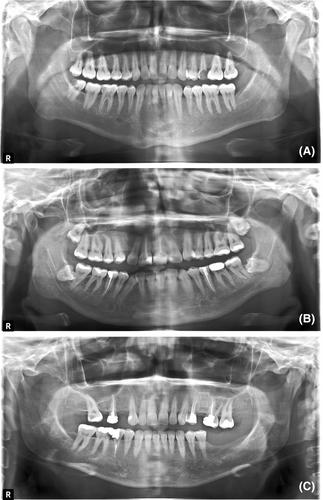Effect of using different strips on reducing the most common error in panoramic imaging: A randomised controlled trial on palatoglossal air space shadow
Abstract
Introduction
Panoramic radiography quality can be impaired by some errors such as positioning errors. Palatoglossal air space shadow error is one of the most common positioning errors and it is due to the tongue not sticking to the roof of the palate. Techniques used to deal with this error might help prevent unnecessary radiation to patients and save them time and money. The study aimed to investigate the effects of using celluloid matrix and edible tapes (fruit leather and chewing gum) on reducing the palatoglossal air space shadow error in panoramic imaging.
Methods
In our study, 270 patients referred to the Department of Radiology were randomised into three groups: a control group, a celluloid matrix group and an edible tapes group. Before panoramic imaging, all patients were instructed to adhere their tongues to the roof of their mouths, with the distinction that for the celluloid matrix and edible tapes groups, patients were asked to place celluloid tapes, fruit leathers, or chewing gums on their tongues before doing so. The routine imaging process was then performed, and the results were compared across groups to evaluate the incidence of palatoglossal air space shadow error.
Results
The number of error-free images in each fruit leather, chewing gum and celluloid tape group were significantly higher than the control group (all cases P < 0.05). The chances of error-free images in the fruit leather groups were the highest (9.57 times). The age (P = 0.136) and gender (P = 0.272) of patients had no significant effect on the results of interventions.
Conclusion
The application of fruit leathers, chewing gums and celluloid tapes reduced the palatoglossal air space shadow error of panoramic imaging.


 求助内容:
求助内容: 应助结果提醒方式:
应助结果提醒方式:


